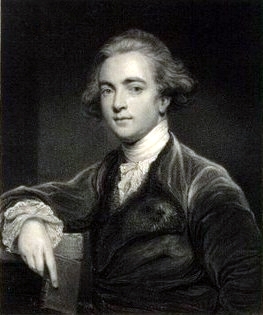The Role of Sanskrit in Philology
How did Sanskrit become the pivotal language in the establishment of the Indo-European languages?
In 1778 William Jones, a lawyer in London with a taste for politics, heard the news that one of four Supreme Court judge positions in India was open. The judges were all appointed in England, because by that time the Persian Mughal Empire in India had come under the military and administrative rule of the British East India Company. Jones knew he wanted the judgeship.
No one else in England – or Europe, even – was better versed in the Orient than Jones. He knew Persian fluently, a key skill for someone working for the Company because Persian was the language used by native princes in their letters to the Company. Jones also knew Mohammadan law, another key skill because the former rulers of the territory the Company had encroached upon were Muslim.
 Jones wanted the post mostly for the salary. The judgeship paid six thousand pounds a year. He figured he could save twenty thousand pounds in five years, return to England, and go into parliament. Five years later he finally made it to Kolkata (Calcutta) in the Indian state of Bengal.
Jones wanted the post mostly for the salary. The judgeship paid six thousand pounds a year. He figured he could save twenty thousand pounds in five years, return to England, and go into parliament. Five years later he finally made it to Kolkata (Calcutta) in the Indian state of Bengal.
Note: He was knighted upon his arrival in India and is known in history as Sir William Jones.
He had a life-long passion for social justice and quickly discovered major injustices in the court system toward Indians. He determined that if there were a good system of laws and a just administration of them, there would be long-term peace, not to mention prosperity for Great Britain. He immediately encountered one large problem: he did not know Sanskrit.
When Jones was hearing a case, a lawyer might cite a point, no matter how illogical, and claim it to be part of Hindu code. Jones had no alternative but to accept it. Knowing well the pitfalls of translations, he was wary of depending on Persian versions of Hindu laws, and he was unimpressed with the single English translation that existed of an original Sanskrit law code.
So he set out to learn Sanskrit, whereupon he encountered another large problem: no Brahman would take him on as a student, and this caste was the keeper and preserver of the sacred language and its manuscripts. Even when he assured the Brahmans he would not defile the religion by asking to read the Vedas, no one would help.
Eventually he found a vaidya, a medical practitioner, who knew Sanskrit but who himself was prohibited from reading certain texts, to teach him. Over the next few years Jones applied himself to learning this important language.
Having been well educated at Harrow and University College, Oxford, Jones also knew Greek. It did not take him long to see that the Greek word for such a common verb as ‘I give’, namely dídōmi, was strongly similar to the Sanskrit word for ‘I give’, namely dádāmi. In fact, he found the verbal paradigms of the two languages to be remarkably coincident, along with great stretches of vocabulary.
In 1786, in his Third Anniversary Discourse to the Royal Asiatic Society of Bengal (a society he himself established), he had determined that ancient Sanskrit and classical Greek and Latin bore “a stronger affinity,” as he put it, “both in the roots of verbs and in the forms of grammar, than could possibly have been produced by accident; so strong indeed, that no philologer could examine all three, without believing them to have sprung from some common source.”
He went on to suggest that Germanic and Celtic as well as Old Persian were also likely related. This discourse was the first and clearest expression of the possibility that Sanskrit, Greek, and Latin, and perhaps others, were divergent later forms of some single prehistoric language.
Although Jones’s works on Hindu law did form the basis for much of Indian jurisprudence for the next hundred years or more, he was never able to see through his list of judicial reforms. Neither did he ever return to England, for he died in Kolkata at the age of 48. He did, however, make a lasting contribution to language studies for pointing scholars to the right path for working out the historical relationships among the languages of Europe and South Asia.
It is the focus of this chapter to summarize the major kinds of classifications of the world’s languages – historical, areal, typological, and functional – that linguists have developed in the more than two centuries since Jones’s Third Anniversary Discourse.
See also: Languages in the World Blogs
From Chapter Three of Languages in the World. How History, Culture, and Politics Shape Language. (affiliate) Julie Tetel Andresen and Phillip Carter. November, 2015. Wiley-Blackwell.
Categorised in: Language, Thoughts
This post was written by Julie Tetel Andresen
You may also like these stories:
- google+
- comment




